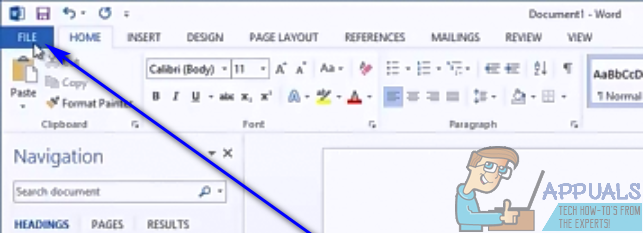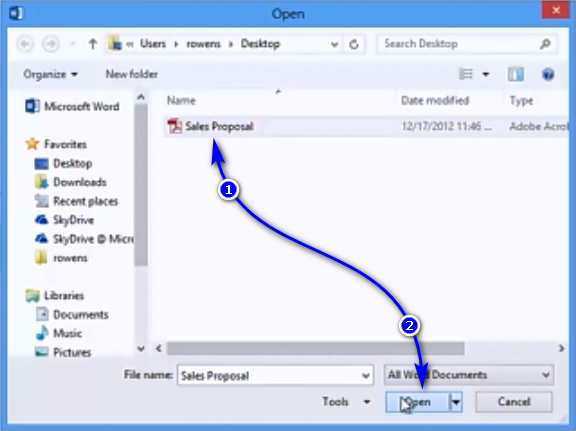How to Open a PDF File in Microsoft Word
PDF (Portable Document Format) files are generally viewed in PDF viewers such as Adobe Reader and edited in PDF editing applications such as Adobe Acrobat. PDF files can consist of both text and graphical elements, but how much easier would things be if you could simply open and edit a PDF file in Microsoft Word? Microsoft Word can also be used to create and edit documents that contain both text and graphics, so it would make sense for Word to be able to open PDF files. Unfortunately that isn’t the case – or at least wasn’t the case, not until Microsoft Word 2013 came into being.
With Word 2013, Microsoft added the ability to open PDF files in Word, edit them and then save them in the PDF file format. To do so, Word converts the PDF file into a file Word can read, open and edit, and then opens it, converting it back to a PDF file when the user saves the changes they make to it. The conversion from PDF to Word is not flawless, which is why a user may find that some lines and pages break at bizarre points or that there are some inconsistencies in the document once it has been converted from PDF to Word and then opened in Word. This functionality is also available in Word 2013’s successor, Word 2016.
However, what of all of the versions of Word that came before Word 2013? And what of instances where converting the PDF file in question from PDF to Word causes the file to lose substance? Well, in these cases, you can make use of an application – say, Adobe Acrobat – to fully convert the PDF file into a Word file and then open the converted Word file in Word.
Without further ado, here’s exactly how you can open a PDF file in Word:
Opening a PDF file in Word 2013 and Word 2016
If you’re using Word 2013 or Word 2016, opening a PDF file in Word is pretty simple – all you need to do is use the Open functionality to locate the PDF file and have Word open it, and the program will automatically convert and then open the file. Here’s exactly what you need to do:
- Click on File > Open.


- Under Open, click on Computer to select it.

- Click on Browse in the right pane.

- In the Open window, navigate to the location on your computer the PDF file you want to open in Word is in.
- Locate the PDF file in question and click on it to select it.
- Click on Open.

- Word will display a message stating that it will now convert the selected PDF file into an editable Word document and that you may lose some substance or formatting as a result, especially if the selected PDF file is graphics-heavy. Word will also inform you that the process may take some time. Click on OK.

- Simply wait for Word to convert the selected PDF file into a Word document you can edit.
When Word converts a PDF file into an editable Word document, it prioritizes your ability to edit the text in the file over the overall layout of the file and the formatting of its contents. While the formatting of the content of the resulting document is pretty impeccable compared to the original PDF file in almost all cases, the layout (page breaks, for example) can be a bit messed up, and that’s just something you’ll have to be okay with.
Converting a PDF file into a Word file and then opening it
If you’re using a version of Word that is older than Word 2013 or if converting the PDF file in question into an editable Word document messes it up to the extent that you can’t successfully make the changes you want, you can convert the PDF file into a Word file beforehand and then open it in Word. You’re going to need Adobe Acrobat to do so, however. To convert a PDF file into a Word document using Adobe Acrobat, you need to:
- Open the PDF file in Adobe Acrobat.
- In the right pane of Adobe Acrobat, click on the Export PDF tool.
- For your export format, select Microsoft Word.
- Select Word Document.
- Click on Export. Adobe Acrobat will begin converting the PDF file into a Word document, which may take some time depending on how large the PDF file is and just how graphics-heavy it is. If the PDF file contains any scanned text, Adobe Acrobat will automatically run text recognition on it.
- Name the Word file Adobe Acrobat creates and save it in a desired location on your computer.